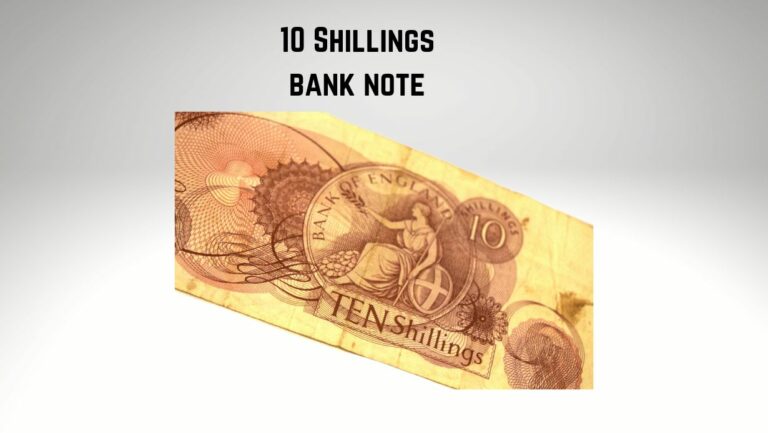
Have you ever wondered how much a shilling is worth in today’s currency? Join us as we delve into the history and value of this intriguing coin. From its origins to its significance in different time periods, we’ll explore the shilling’s journey through the ages.
Understanding the worth of a shilling can provide valuable insights into economic trends and historical contexts. Let’s uncover the stories behind this iconic coin and unravel the mysteries of its value. Join us on a fascinating exploration of the shilling’s worth and discover the hidden treasures of its past.
Origins of the Shilling
The shilling has a rich history dating back to the reign of King Henry VII in England. Introduced in the early 16th century, the shilling was originally made of silver and had a value equivalent to twelve pence. Its name is believed to have originated from the Old English word “scilling,” meaning a division or a portion.
Over time, the shilling became a staple in various European countries, including Great Britain, Ireland, and British colonies, as a standard unit of currency for trade and everyday transactions. This widespread usage solidified the shilling’s position as a reliable and recognizable coin.
In the numismatic world, the shilling holds a special place, often featuring intricate designs and symbols that reflect the culture and history of the issuing authority. These artistic elements not only add to the aesthetic appeal of the coin but also provide valuable insights into the socio-political landscape of the time.
As economies evolved and currencies changed, the shilling underwent transformations to adapt to new monetary systems. While its metallic composition may have shifted over the years, the shilling’s enduring legacy as a symbol of value and trade has transcended generations, making it a fascinating subject for numismatists and historians alike.
Value of a Shilling in Different Time Periods
Throughout history, the value of a shilling has fluctuated, reflecting the economic landscape of the times. Let’s take a journey through various epochs to understand how much a shilling was truly worth.
Ancient Times:
- In ancient Rome, the shilling, known as a “solidus,” was equivalent to 24 silver denarii.
- This established the shilling as a high-value coin in Roman society, showcasing its importance in trade and commerce.
Medieval Era:
- During the Middle Ages, one shilling was often worth 12 pence, emphasizing its significance as a unit of account.
Renaissance Period:
- In the 16th century, the value of a shilling in England was 12 pence, aligning with its medieval roots.
Industrial Revolution:
- With the onset of the Industrial Revolution, the value of a shilling remained stable at 12 pence, providing consistency in transactions amidst rapid societal changes.
Modern Times:
- As currencies evolved, the worth of a shilling transitioned, with countries like Great Britain decimalizing their currency to simplify transactions.
Conversion to New Currencies:
- The shift to decimalization often resulted in the phasing out of the shilling, replacing it with modern decimal equivalents.
Numismatic Value:
- Despite phasing out from circulation, shillings hold significant numismatic value today, attracting collectors due to their historical importance and intricate designs.
- The value of a shilling varied across time periods, serving as a testament to the economic shifts and cultural transformations experienced throughout history.
Economic Significance of the Shilling
The shilling played a crucial role in shaping economic landscapes throughout history. Here’s a closer look at its economic significance:
- Stable Value: For centuries, the shilling maintained a consistent value, making it a reliable unit of currency for trade and commerce.
- Standard of Pricing: The shilling served as a standard for pricing goods and services, simplifying transactions and ensuring clarity in financial dealings.
- International Trade: As a widely recognized currency, the shilling facilitated international trade, enabling nations to engage in economic exchanges with confidence.
- Symbol of Wealth: The shilling symbolized wealth and prosperity, often featuring intricate designs and craftsmanship that reflected the economic prosperity of the issuing authority.
- Legacy of Trade: Its enduring legacy in trade and commerce continues to be felt today, with shillings garnering interest from collectors and historians alike for their historical and economic significance.
- Icon of Economic Stability: The shilling stood as an icon of economic stability, providing a foundation for financial transactions and contributing to the growth and development of economies worldwide.
In the next section, we’ll delve into the cultural impact of the shilling and explore how its symbolism transcended mere monetary value.
Historical Context of the Shilling
In the Historical Context of the Shilling, it’s important to understand that the shilling has deep roots in history. Here are a few key points to consider:
- The shilling was originally a unit of account in medieval England, dating back to the Anglo-Saxon period.
- Henry VII introduced the shilling as a coin in the early 16th century, made of silver.
- Over time, the shilling evolved into various forms and denominations, playing a crucial role in the British currency system.
- Decimalization in 1971 transitioned the shilling into its modern form, with 100 pence equaling one pound.
- The shilling’s history reflects the economic and political changes of the countries that used it.
Understanding the Historical Context of the Shilling provides insight into its significance and value in different time periods.
Unraveling the Mysteries of Shilling’s Value
When delving into the complexities of determining how much a shilling is worth, we must consider various factors that have influenced its value throughout history. The shilling’s worth has ebbed and flowed over the centuries, reflecting changes in economies, markets, and cultural perceptions. Let’s explore some key points to unravel the mystery behind the shilling’s value:
- Inflation and Devaluation:
- Historical inflation rates can give us a glimpse into how the shilling’s purchasing power has evolved over time.
- Devaluation policies by governments have directly impacted the shilling’s value, often leading to fluctuations in its worth.
- Metal Content:
- The composition of the shilling, whether it is made of silver, copper, or other materials, greatly affects its intrinsic value.
- Changes in the metal content of the shilling have had a substantial impact on its overall worth.
- Economic Stability:
- The economic stability of a nation plays a significant role in determining the shilling’s value.
- Factors such as GDP growth, unemployment rates, and fiscal policies all contribute to the shilling’s purchasing power.
- Cultural Significance:
- Beyond its economic value, the shilling holds cultural significance that can influence its perceived worth.
- Historical events, traditions, and symbolic meanings attached to the shilling can elevate its value beyond monetary considerations.
By examining these factors, we can begin to unravel the intricate tapestry of the shilling’s value, shedding light on the myriad forces that have shaped its worth over time.
Key Takeaways
- The shilling originated in the 16th century and held a value of twelve pence, with its name derived from Old English.
- The shilling’s value varied across different time periods, from ancient Rome to modern decimalized currencies.
- The shilling played a vital role in economic stability, standard pricing, international trade, and symbolized wealth.
- Despite phasing out from circulation, shillings hold significant numismatic value attracting collectors for their historical importance and designs.
- Understanding the historical and cultural context of the shilling provides insights into its significance and value over time.
- Factors like inflation, metal content, economic stability, and cultural significance influence the shilling’s value throughout history.
Conclusion
Understanding the value of a shilling involves a deep dive into historical, economic, and cultural factors. Inflation, metal content, and economic stability all play a role in determining its worth. By unraveling these complexities, we gain insight into the intricate dynamics that have influenced the shilling’s value over the years. The shilling’s journey through time reflects a fascinating interplay of forces that have shaped its significance.
Frequently Asked Questions
What factors influence the value of a shilling?
The value of a shilling is influenced by factors such as inflation, devaluation policies, metal content, economic stability, and cultural significance. These elements play a crucial role in determining the worth of a shilling over time.
How has inflation impacted the value of a shilling?
Inflation has had a significant impact on the value of a shilling by reducing its purchasing power over time. As prices rise due to inflation, the value of a shilling decreases, making it worth less in terms of goods and services.
Why is the cultural significance of a shilling important in determining its value?
The cultural significance of a shilling is important in determining its value because historical and societal perceptions can influence demand and rarity. Shillings with unique historical significance or cultural relevance may be more valuable to collectors and investors.






